The 10 Worst American “Anime” Ripoffs
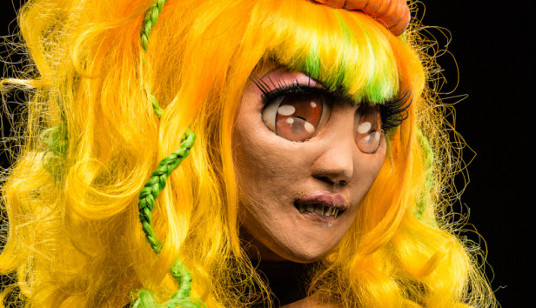 |
Sometime in the early-to-mid ‘aughts, anime and manga became a ubiquitous part of the pop-cultural diet of millions of kids and teens. From huge TV ratings for the likes of Dragon Ball Z and Sailor Moon, to manga hits like Fruits Basket and Naruto, there was no denying the popularity of these Japanese imports.
Of course, several years later, bookstores plummeted and took most of the manga market with them, and things like piracy and changing demographics virtually decimated the hunger for anime. But before all that, several of the laziest and cynical minds in the US thought that if they created something “anime-inspired,” they could ride anime and manga’s success with the youth market. Too bad for them “anime-inspired” tended to simply mean “BIG HORRIBLE EYES AND TINY MOUTHS AND ROBOTS AND STUFF.” There’s no shortage of absolutely rotten American “anime” ripoffs, so let’s look at ten of the worst offenders!
10) The Video Game Oni
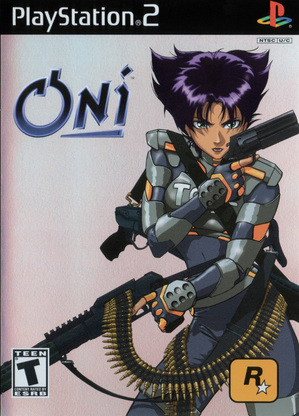 |
Our first stop on the Rip-Off Train begins in 2001, when a spinoff of Bungie (yes, that Bungie, of Halo fame) channeled their love of the hit manga and anime Ghost in the Shell into an ambitious third-person shooter-slash-melee combat game, released on PCs, Macs, and PS2s.
The result is sorta like Ghost in the Shell! Except without, y’know, all the ambiguity and intrigue and intellectualism. Also, the AI sucks and the save points are terrible and the controls are a hassle.
Nevermind the gameplay, the story is just a pale-faced imitation. It’s Westerners – and this is going to be a theme here – attempting to tackle a popular anime, while completely ignoring everything that made the original unique and interesting. Ghost in the Shell was great for its lofty ideas and biblical symbolism, and also for its striking visualization of a cyberpunk dystopia; Oni, and we might as well throw Rare’s two Perfect Dark games in this while we’re at it, sorta nails the latter while completely ignoring the former. Oni‘s protagonist is like an Americanized doppleganger of Ghost in the Shell’s Major Kusanagi, but while Kusanagi personified the series’ trademark sense of William Gibson-esque philosophy, Oni’s Kusanagi impostor roils about in a boilerplate Tom Clancy novel of gub’mint corruption, replete with your prototypical bullshit backstory.
9) Death: At Death’s Door
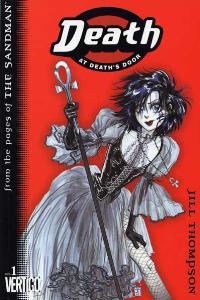 |
In what will be the first of many examples of American comics taking the wrongest possible examples from the manga industry, our first foray into manga-ish territory is Vertigo’s erstwhile spinoff of Neil Gaiman’s lauded Sandman series, Death: At Death’s Door.
But first, a caveat! I absolutely adore Jill Thompson’s artwork; she’s as talented a comic book artist as anyone else in the industry, and I applaud the fact that she’s a strong female artist in a field that is traditionally dominated by men.
Unfortunately, Jill Thompson isn’t a manga artist. The majority of At Death’s Door reads and looks like somebody smeared goth makeup all over a poorly Xeroxed copy of Kodomo no Omocha. And the fact that the story behind At Death’s Door is just a retelling of a pre-existing Sandman side story doesn’t help. If anything, it smells of a fishy cash-in: Vertigo attempting to shove out an existing product with a new and janky coat of manga paint. Vertigo is supposed to be a beacon of artistic hope and light in a comic book industry rife with sameness and familiarity.
8) Season 6, Episode 6 of SyFy’s Face Off
I know I have a history on this website of sandbagging every single one of SyFy’s endeavors, but one of my unabashed loves in this universe is Face Off, their long-running reality competition show that forces a bunch of up-and-coming makeup artists into the spotlight while attempting to out-do one another with kooky monsters and makeups.
So when the episode came up wherein the cast was surprised with the announcement that they’re going to Japan, and their challenge was to create an “anime-inspired makeup,” the fear started to bubble.
“Oh God,” I thought to myself. “I hope to shit they don’t make some bug-eyed ‘anime’ monster.”
AND THEN THEY DID JUST THAT.
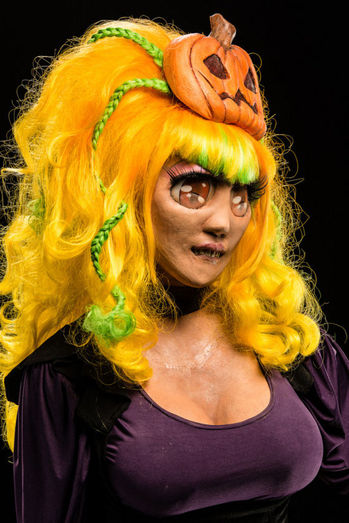 |
And instead of sending everybody packing because they made giant-eyed nightmare machines, they were given a pat on the back for “really capturing the anime aesthetic.” Good lord.
This speaks to a lot of problems, not the least of which is this simple thing: EVERYBODY SEEMS TO THINK THAT ALL ANIME IS IS “BIG EYES SMALL MOUTH.” This isn’t the ’90s anymore, folks. You can’t get away with making an RPG rulebook with that exact same name these days.
The winner was a guy who made a giant fish-man. What the hell that has to do with “anime” also is anybody’s guess. But at least any nightmares that occur from looking at the Fish Man are intentional.
7) The Overwhelming Majority of Tokyopop’s “Original English Language” “manga”
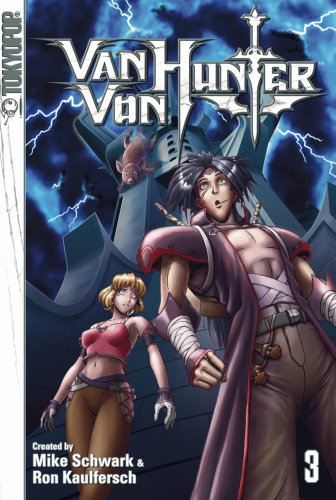 |
This one is a double-edged sword. Enlightened by the fact that the popularity of Tokyopop’s translated versions of titles like Fruits Basket and such were eating away at the sales of Western comics in the early-to-mid 2000’s, Tokyopop engaged in a bit of pop-culture philanthropy; they announced soon after that they were going to begin producing original content under the auspice of “Original English Language” manga.
Of course, whether or not anyone from Japan even counts as creating “manga” is up to the Linguistics PhD’s in the audience, but the real question of whether or not any of them made anything worth reading is another matter. In short: a few of them did. Most of them did not.
But let’s not name names, because that would be mean and belittle the creative work that several people were afforded due to Tokyopop’s naivite/generosity. Actually, let’s only name two of them: Princess Ai and Van Von Hunter.
Princess Ai, in the rare case where you either weren’t a manga-devouring teenager or a Borders bookstore employee circa 2006, is supposedly a “collaboration” between professional Twitter crazypants and bon vivant Courtney Love, manga artist Ai Yazawa, and “DJ Milky.” Now, “DJ Milky” is absolutely the sort of weird English gobbledygook that you’d expect from a Japanese manga artist, but in actually, “DJ Milky” was the pen name of Tokyopop boss Stu Levy. Hilariously, each Princess Ai volume ended with some of DJ Milky’s own unique brand of “poetry.” Oh, the concept of manga teens reading poems that were actually written by a man in his mid-40s with a Business Degree from UCLA; it’s the most beautiful kind of sadness.
There was also the whole kerfluffle regarding Tokyopop’s “Rising Stars of Manga,” a semi-annual contest where Levy and his Tokyopop cronies would vote on said stars of “Manga” for the dubious honor of a publishing contract with Tokyopop. All well and good, except that the quick quote from a review:
Perhaps this is a movie just for fans of Manga, or the Van Von Hunter series, and it was just lost on me. But at times it just seemed too self-indulgent (especially considering the directors also wrote the script and starred as versions of themselves.) A short of the story would have been great; a feature was almost unbearable.
See if you can make it through the trailer:
6) RWBY
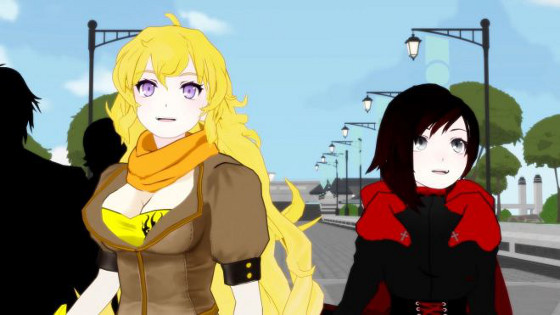 |
But let’s move on from the world of comics to look at another medium that co-opts from Japanese storytelling: animation!
Our first piece of blatant anime ripoffs comes from the folks at Rooster Teeth, best known by dozens of Halo obsessed teens from 2005 for Red vs. Blue, the “Machinima” series where nerds pretended to be characters within the game and shouted cusses at each other.
Their latest creation? RWBY, pronounced “ruby”: an amalgamation of Western fairy tales and Matrix-style flashy kung fu nonsense. Did I mention it also looks like a PS2 game? Because it does. In case you’re intrigued for some reason, here’s the first episode below.
Now, before people start getting on my case for picking on people who aren’t “professionals” in any sense, I will say this: I spent the better part of the last decade as an advice columnist for an anime website, and my inbox was constantly spammed with emails from people asking how they could “make their own anime.” To Rooster Teeth’s credit, they kinda did – but my point, to all those kids out there, was this – don’t just leech off of what every other anime out there has done. And don’t do what other things on this list have done – which is to halfheartedly co-opt a pile of anime cliches stitched together from numerous sessions of Final Fantasy VII and Evangelion and add nothing else unique or interesting.
And that’s pretty much what RWBY is. A facile, five-minute encapsulation of what people assume anime is on the surface. There’s no depth, no distinguishing characteristics, and no heart. Just a pile of well-worn tropes and cliches assembled from videogames and anime; a colorful, badly-rendered CGI-fest of steampunk, pushed through the prism of people who obviously just want to tell a story – albeit one we’ve all seen a thousand times before.
5) Nickelodeon’s Failed Pilot Constant Payne
But at least RWBY isn’t the work of so-called “professionals.” In 2001, Nickelodeon began their usual round of pilots and tapped Micah Wright – a writer for several previous Nicktoons like The Angry Beavers – to give ’em something action-oriented, in order to compete with the likes of Dragon Ball Z and other anime-ish shows that were routinely beating them in the ratings.
The resulting product was the aptly-named Constant Payne, which goes far above and beyond the usual anime ripoffs by quite literally borrowing as many elements from Cowboy Bebop as humanly possible in a 10-minute pilot. That’s the pilot above, in case you’re curious.
4) Kappa Mikey
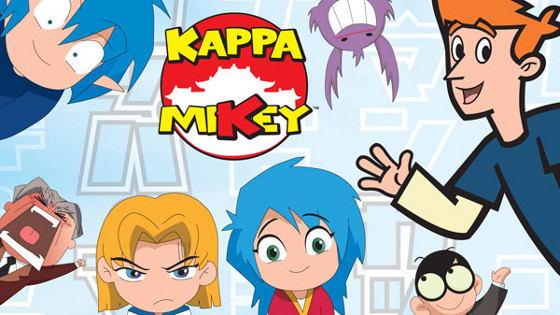 |
Unhindered by Constant Payne‘s painful failure, Nickelodeon then teamed with beloved arbiters of Japanese imports 4Kids Entertainment to launch, quote, “The first anime to be produced entirely within the United States.” Gulp.
The concept was quirky enough – a milquetoast American teen becomes a fish-out-of-water in Japan, alongside a band of stereotypical Japanese anime crimefighters and superheroes – but the execution was utterly bizarre. In order to highlight, perhaps, the differences in animation styles between East and West, I suppose, Mikey and the other Western characters are rendered in your typical superflat Nickelodeon house style, while the Japanese characters resembled what usually passes for “anime fanart” by teenagers on DeviantArt.
A cute idea, but in practice, it made the show look like – uh, like this.
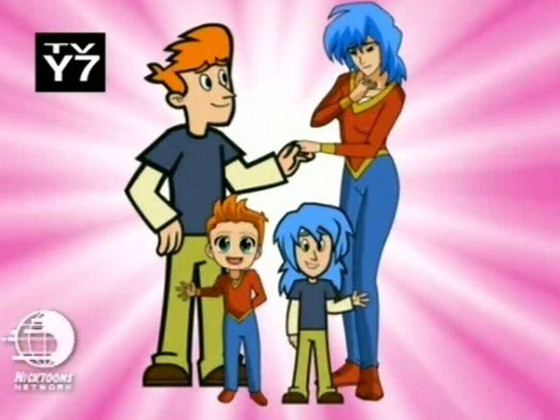 |
In other words, profoundly confusing and ugly. It’s one thing to take cues and styles from Gainax’s groundbreaking FLCL, but it’s another thing to adapt them well. Teen Titans did it, but Kappa Mikey looks like a messy paint smear of disparate ideas.
3) Monsuno
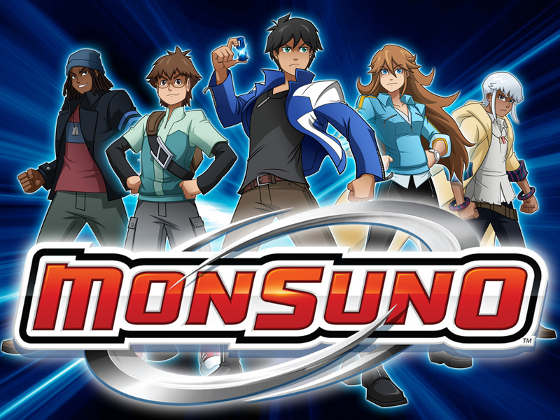 |
I’ll give Kappa Mikey some credit though – at least it was trying to have some fun with it’s central concept.
None of that fun is prevalent with Monsuno. Instead of trying to have some dumb fun with anime and its characteristics, Monsuno is a vile, cynical, and downright evil attempt by middle-aged toy and licensing executives to launch their own, Americanized version of Yu-Gi-Oh! and Pokemon.
Produced by the highly creative and storytelling-focused minds at the toy companies Jakks Pacific and The Topps Company, Monsuno is, in case it weren’t obvious, as blatant a cash-grabbing amalgamation of every hit anime property before it. You got your monsters, your card battles, your spiky-haired protagonists – everything it takes to make a hit, right?
These things are absolutely gross. At least Yu-Gi-Oh! and Pokemon had their roots in something somewhat creative before they became synonymous with soulless merchandising tie-ins; Yu-Gi-Oh! was originally a batshit insane shonen manga, and Pokemon, of course, was a terrific Game Boy game we all played as kids. Stuff like Monsuno attempts to leap-frog the entire organic process of becoming a hit franchise and goes straight for the throat, plastering merchandise and crappy cartoons like a shotgun blast of ripoff mediocrity.
2) Marvel’s “Mangaverse”
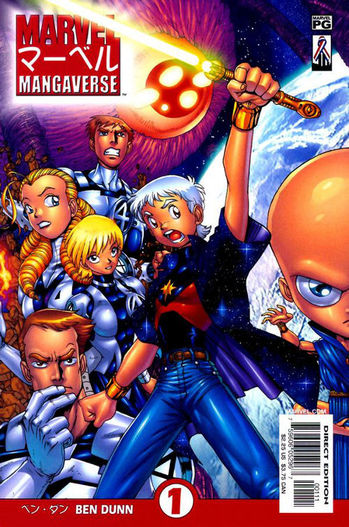 |
But it’s not as though we expect Nickelodeon or Jakks Pacific to necessarily know any better than to succumb to their worst impulses in an attempt to cash in on a “fad.” But Marvel Comics, we… actually, we expect Marvel to cash in on fads too. Nevermind.
That still doesn’t explain Marvel Mangaverse, a two volume Alternate Universe version of various Marvel characters with a purported “manga” twist. In Mangaverse, the Avengers Voltron themselves together to form Mazinger Z – I mean, Iron Man. Hulk isn’t Bruce Banner, he’s a Godzilla-like monster summoned by Banner.
It is, in other words, kind of embarrassing, not very interesting, and serves no purpose other than to provide a few too many winking nods to Gundam and Evangelion while drawing familiar Marvel characters in a style that’s far too close to both American comics and manga to really fit as either.
1) Spider-Man Loves Mary Jane
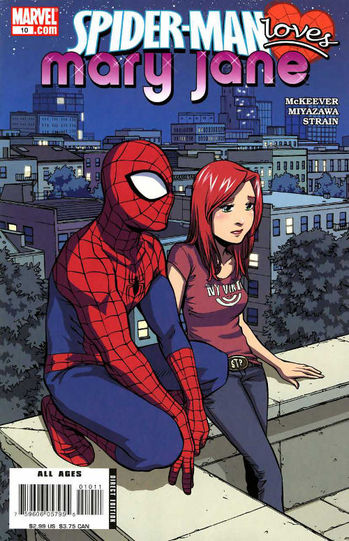 |
Though Marvel’s Mangaverse was just a one-off experiment by Marvel, one they obviously didn’t expect to last beyond being just a strange curio, one title they obviously banked a bit too hard on was Spider-Man Loves Mary Jane.
Looking at the huge sales numbers for various shojo manga, and the huge influx of girls that the manga market was bringing in, it only made sense to create their own shojo manga, right? And why not feature everybody’s favorite webslinger and his beau?
Instead of really stepping up to the plate and delivering a really knockout piece of original, girl-oriented stories, like, say, Fruits Basket, Spider-Man Loves Mary Jane is as toothless and sanitized as an Archie comic from the 80’s. Mary Jane crushes on boys, gets invited to the homecoming dance, and worries about homework; ho-hum. It’s toothless and, even worse, pandering.
What gave manga such an immense amount of love from young girls was that finally they were given comics that were not only written by girls, for girls, but they were getting stories and characters that were in some way sophisticated, and somewhat scandalous, and far from the wholesale, easily-forgettable folderol of Spider-Man Loves Mary Jane.
Of course, that’s just the tip of the iceberg for anime ripoffs – American pop-culture is full of ’em. I’m sure I missed a good one, so let me hear ’em in the comments!
